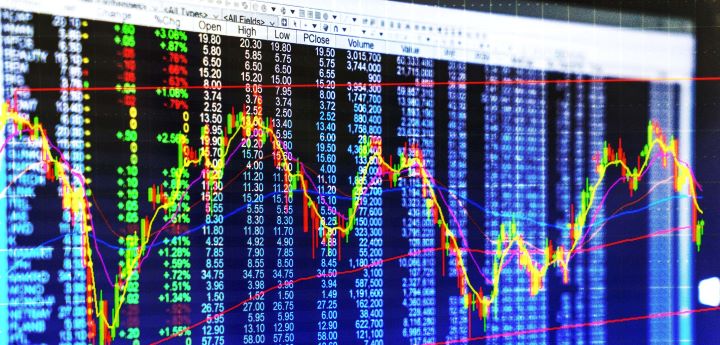The war in Ukraine has already had a huge economic impact – globalisation has reversed, market capitalism contracted, inflation has surged and higher interest rates are threatened. William Bourne warns that the LGPS should expect a more volatile and stressful future.

I have warned for several years of the approach of a new page in economic history. My argument is that the fundamentals underpinning markets since the eras of Ronald Reagan and Margaret Thatcher are becoming unsustainable. Market capitalism, globalisation, falling inflation, and the “Greenspan put” (the belief that central banks would underwrite markets), have all come under increasing strain since the global financial crisis in 2008. Some outcomes too, such as the wealth gap between rich and poor, are also becoming increasingly unacceptable in today’s world.
The Covid-19 lockdowns prepared the ground for a new era, reducing trade and travel, increasing government interference with resource allocation, trebling the size of central bank balance sheets and providing the first inflationary pulse after 20 years of low inflation.
But the war in Ukraine is the actual turning of the page. I cannot predict how it will evolve, but the future will not look anything like the past, and investors will need to be prepared to react to the new normal rather than clinging to old beliefs.
Back to the 1980s
First, globalisation has gone into reverse. The world may or may not bifurcate, but international trade is going to diminish. Whether China and India come down on Russia’s side or not, the concept that goods or parts can be made more cheaply anywhere in the world and transported to wealthy Western countries will lose out to the importance of supply security. Even tourism and travel will become more difficult, more expensive and probably more dangerous. As one small example, some flights from the UK to Japan are reverting to the 1980s route via Alaska.
Secondly, governments’ role in society will expand and that of market capitalism contract. That is normal during wars, because they need to supply the military machine and control people’s activities. But even if hostilities in Ukraine come to an end in the short term, governments are becoming more authoritarian and playing a bigger part in resource allocation. Examples are the focus on health spending during Covid, and the UK’s levelling-up agenda.
Long-term inflation will be higher. That is not just a function of higher energy and commodity prices. Wars have a habit of being inflationary because the military and governments are not price sensitive. The price of labour will rise too, as long-term demographics reduce the working-age population.
Finally, central banks have been talking loudly about retrieving some of their Covid largesse by raising interest rates and shrinking balance sheets. Politics will make it hard to do this: energy and food price hikes make economies even more fragile, and they risk precipitating the next recession. Sooner or later they will reach for the magic money tree.
The war in Ukraine is the turning of the page. I cannot predict how it will evolve, but the future will not look anything like the past, and investors will need to be prepared to react to the new normal rather than clinging to old beliefs.
Net-zero calculations
Another unknown is the impact of the Ukraine war on the transition to net zero. Until Russia’s invasion, it was assumed that gas, cleaner than coal or oil, would play a large part in plugging the energy gap until renewables are reliable and plentiful enough to take over. For example, even at net zero in 2050, somewhere between 20% and 40% of energy would still be generated from fossil fuels.
With the likely removal of Russian gas from the equation, at least for Europe, those calculations now look awry. In the short term, to keep the lights on, countries will need to go back to “dirtier” fossil fuels and recommission nuclear power. In the longer term, higher energy prices should accelerate the transition because they will provide incentives to shift to renewable energy or to innovate.
In the short term, to keep the lights on, countries will need to go back to ‘dirtier’ fossil fuels and recommission nuclear power.
Room151’s LGPS Quarterly Webcast
26 May 2022
Online
Public sector delegates – register here
Risk of sustained inflation
What does this mean for the LGPS? Higher inflation sooner seems the most obvious outcome, which in turn implies higher bond yields. That will have a negative impact on the valuations of all assets, but particularly longer-duration ones, including currently favoured asset classes such as infrastructure.
LGPS funds may not mind this duration risk if their assets are informally matched against long-duration liabilities. However, they should be aware of the risk of sustained inflation because there is no direct inflation cap on pension rises. Very few assets, except for index linked gilts (ILGs), will provide a robust hedge, as the 1970s proved. Hedging with ILGs incurs a substantial opportunity cost unless the LGPS takes the private sector route and uses leverage via derivatives. The “defences”, if we do find ourselves in an era of high inflation, lie at scheme level in the cost cap mechanism and, secondly, at government level if the government were to decide to break the inflation linkage.
More generally, leverage may become less attractive than it has been historically. Money will have a higher cost, so that borrowers will think more carefully before borrowing. Refinancing will become more difficult for those who have extended themselves too far, whether consumers, corporates, or governments. Much of this is healthy in the long term because it will reduce the importance of financial structuring and wizardry. However, it increases the chances of defaults and financial stress.
This leads on to my final point: that the future is likely to be more stressed and volatile in terms of both politics and markets. Returns generally are likely to be below actuarial assumptions, in contrast to the last 20 years. The ubiquitous “buy and hold” asset allocation of today is unlikely to prove optimal over the next ten years, and a degree of nimbleness will be required to be successful. That is a quality that few LGPS funds or their investment consultants possess; the solution may be to use broader rather than narrower mandates to allow managers to be more tactical. Could multi-asset mandates, used by many 30 years ago, be about to make a comeback?
William Bourne is principal of Linchpin Advisory Ltd and has roles with five LGPS funds.
—————
FREE weekly newsletters
Subscribe to Room151 Newsletters
Room151 LinkedIn Community
Join here
Monthly Online Treasury Briefing
Sign up here with a .gov.uk email address
Room151 Webinars
Visit the Room151 channel














